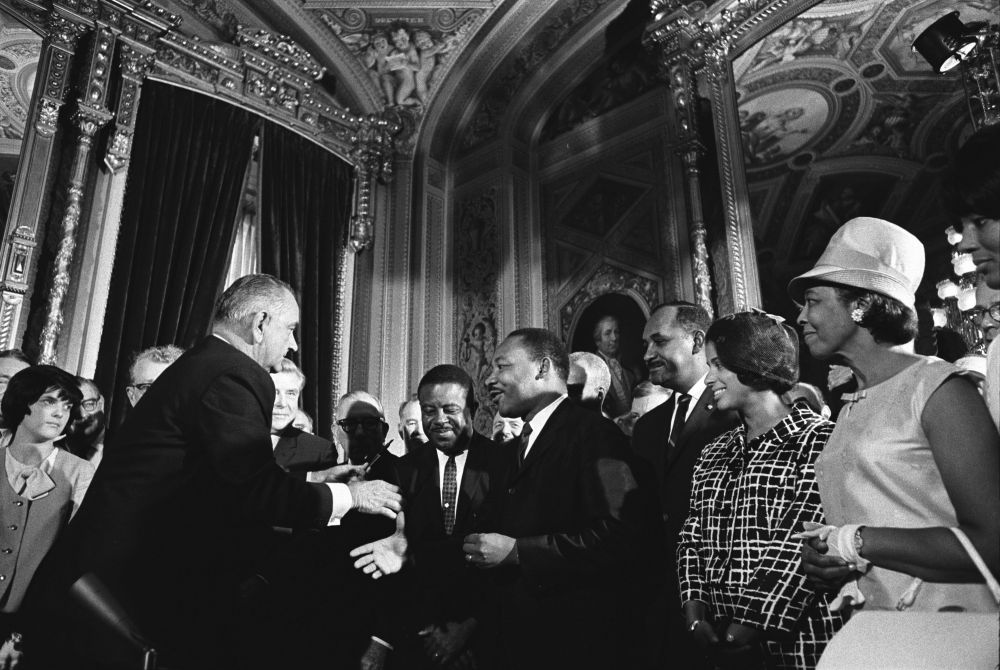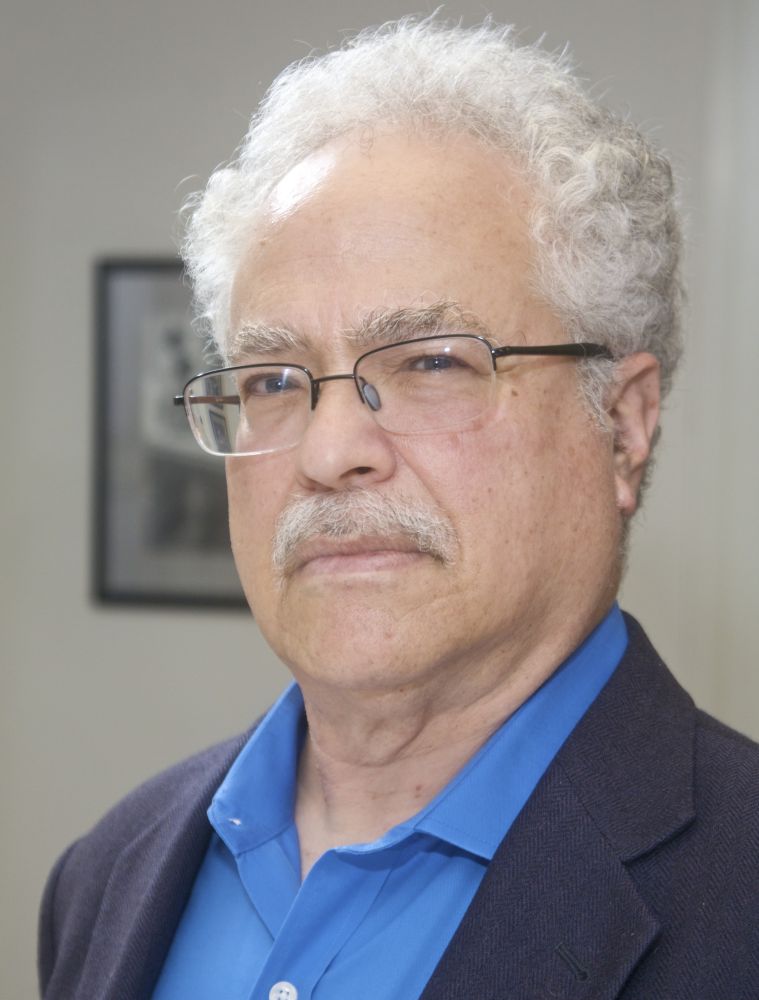
Polls Apart




The premise of the Voting Rights Act of 1965 was simple: uphold the promise of the 15th Amendment. Section 1 was uncomplicated: “The right of citizens of the United States to vote shall not be denied or abridged by the United States or by any State on account of race, color, or previous condition of servitude.”
Signed by President Lyndon B. Johnson, the act followed decades of voter suppression and the disenfranchisement of African Americans, especially in the Deep South. A key feature forced jurisdictions with a history of voter disenfranchisement to seek “preclearance” from the federal government before changing any election laws. It was expected to usher in a durable new era of democracy that would allow the country to turn the page on an ugly chapter of history.
“The Voting Rights Act is a unique piece of legislation because it recognizes systematic voter suppression of entire groups of people, not just individuals,” said George Lipsitz, a UC Santa Barbara professor of Black Studies.
An Act Under Attack
Today, as we approach the 53rd anniversary (Aug. 6) of Johnson signing the act, UCSB scholars argue that it’s been largely eviscerated by the Supreme Court. The deepest cut, they said, was Shelby County v. Holder (2013), in which the court deemed the act’s coverage formula — the way it determines which jurisdictions are subject to its special provisions — unconstitutional. Without a coverage formula the act’s chief enforcement provision is toothless.
“By gutting key provisions of the Voting Rights Act, the Holder decision significantly limited the ability of federal courts to regulate discriminatory practices in the states,” said Hahrie Han, the Anton Vonk Professor of Environmental Politics in the Department of Political Science.
Writing for the 5-4 majority in Shelby, Chief Justice John Roberts argued that the coverage formula was 40 years out of date, and conditions had so improved — mostly thanks to Shelby — that it was essentially obsolete.
Scholars of voting and civil rights, however, would disagree. Lipsitz noted that the act had been updated by Congress five times to keep pace with new efforts to disenfranchise African American voters — what he called “second generation” forms of discrimination.
“For example, in places where Blacks were once prevented from voting because of poll taxes, when the poll tax was eliminated election boards would postpone elections, close polling stations in minority neighborhoods, and even disestablish offices Blacks were likely to win,” he said. “Justice [Ruth Bader] Ginsberg speaks to these in her dissent in Shelby. Voter suppression has persisted systematically despite (and often in violation of) the Voting Rights Act.
“There is systematic voter suppression taking place, and the Roberts court in Shelby basically invited states to invent new forms of suppression,” Lipsitz continued. “The key to the preclearance provision of the Voting Rights Act was that individuals would not have to wait until disenfranchisement took place and then have to appeal to judges appointed by the very politicians who were elected because of voter suppression.”
Colorblindness as a Weapon
Alice O’Connor, a professor history, called the decision “a referendum on understanding how racial inequality works in our society and how it can be combatted,” as Justice Ruth Bader Ginsburg pointed out in her scathing dissent from Roberts’ majority opinion. Although Roberts was speaking from the narrow perspective of jurisprudence, O’Connor said, the majority opinion provided legal cover for an ideological movement that uses concepts of color blindness and racial progress to delegitimize efforts to combat racial inequality.
The doctrine of color blindness holds that policies with race-specific goals — such as integrating segregated schools — are unconstitutional “because they categorize people according to their race,” she said. A related argument, invoked in the Shelby decision, is to use evidence of racial progress to claim that affirmative anti-discrimination measures such as pre-clearance requirements are no longer necessary. “It’s saying, ‘We passed this legislation, it wiped out Jim Crow, it said you can’t impose poll taxes, literacy tests and all that anymore,” O’Connor said. “To do anything more affirmative creates an undue — and unconstitutional — burden on certain states.’ ”
Indeed, scholars say efforts to suppress the vote of African Americans and other minorities have gathered steam since the Shelby decision. Restrictive identification requirements, racial gerrymandering, reduced early voting and the purging of inactive voters are just a few of the tactics being used in multiple states — some with the blessings of the courts.
Purging Voter Rolls
The Supreme Court on June 11 upheld Ohio’s aggressive voter purges in a 5-4 decision written by Justice Samuel Alito. The state argued that federal law allowed it purge voters who missed a single federal election and failed to respond to notices mailed by the state. At least 144,000 voters in the state were disenfranchised in 2016, according to one study.
Han, who has been doing research in Ohio on a separate project, called the purges “haphazard” and said they tend to affect more people of color and the poor.
“What we see right now is there has been a very long assault on voting rights in a number of states around the country,” she said, “where they make it harder and harder for people to stay on the voting rolls. There’s a ton of evidence that shows that it disproportionately affects certain kinds of communities over others.”
Locked Up, Locked Out
O’Connor pointed to what she called another, more modern, form of disenfranchisement: mass incarceration. Since the 1980s, the number of African Americans imprisoned in the United States — which has the highest incarceration rates of any country — has soared. Of more than 2.3 million people locked up, nearly 40 percent are African American, who make up just 13 percent of the population.
But all those inmates do more than just reduce the number of African American votes, she said. It creates what she calls a new three-fifths rule, an echo of the Constitution’s Three-Fifths Compromise, which decreed that slaves should be counted as three-fifths persons for purposes of apportioning representatives and presidential electors for each state. That’s because while inmates are counted as part of the population in whatever state they’re housed, they have no right to vote.
“I think mass incarceration is the standout,” O’Connor said. “It’s played a huge role in disenfranchising people.
Lipsitz agreed, and said it’s part of a larger effort to suppress the vote for people of color. “Mass incarceration and denying the franchise to ex-felons has taken away the vote from 13 percent of potential Black male voters, he said. “But residency requirements for voting also disenfranchise people who suffer most from housing insecurity and move most often. In many states people get their drivers licenses suspended when they cannot pay fines that are unrelated to moving violations. When registrars use drivers licenses as the standard form of identification to vote, this disenfranchises people who owe fines for poverty violations (expired tags, lack of insurance), who are disproportionately minorities.”
Lipsitz cautioned that mass incarceration is not strictly a partisan issue. “Cities where predatory policing leaves large numbers of Blacks underrepresented at the ballot box include Milwaukee, Chicago, Baltimore, New Orleans and Ferguson, where Democrats monopolize elective offices,” he said. “If Clinton and Gore had not embraced the mass incarceration policies mandated by the 1994 Crime Control Act, Gore would likely have been certified as the winner of the 2000 election. Twenty Democrats voted to confirm Roberts as Chief Justice; none staged a filibuster against his nomination. The harm done by the gutting of the Voting Rights Act to me is not to the Democratic Party but to the constitutional rights of aggrieved groups.”
Demographics on the Move
While the post-Shelby voting rights landscape appears bleak, Eric Smith, a professor of political science, said the country’s changing demographics could bring Democratic majorities in Congress that would be more hospitable to protecting voting rights. And jurisdictions working to suppress the vote know this.
“One of the reasons they’re doing this more and more,” he said, “is that they’re looking around at the demographics — younger voters are more likely to vote Democratic, immigrants are coming into the country and becoming citizens and so forth — and they can see what happened in California could easily happen nationwide.”
In 1994 California passed Proposition 187, which severely limited state services to immigrants, by nearly 18 percentage points. The measure was championed by then-Gov. Pete Wilson, a Republican. But the backlash by Latinos and progressives is credited with changing the state’s political makeup.
“We went from being a 50-50 state very quickly to being a solid Democratic state,” Smith said, “because a whole bunch of people who were here and didn’t vote decided they wanted to vote and whole bunch of people who were eligible to apply for citizenship and simply hadn’t bothered did.
Republican-dominated states with large numbers of Latinos know the story well, Smith noted, and are trying to avoid California’s fate.
“In some cases — Arizona, Texas and Florida in particular — they have to work on a strategy of disenfranchisement because if they don’t they’re going to go Democratic fairly soon,” he said. “Without that there’s some fellow out there who’s projecting by 2020 they’d be Democratic states. At that point, with the Electoral College, we’ll have to wait for realignment before we see another Republican president again. And even with disenfranchisement, that’s likely to happen at some point in the 2020s.”



